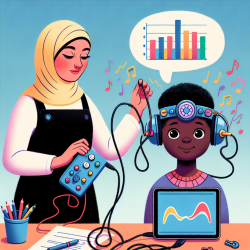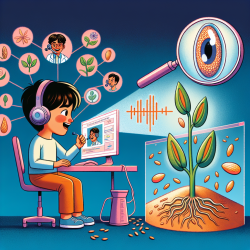Introduction
Autism Spectrum Disorder (ASD) is a complex neurodevelopmental condition that affects approximately 1% of children globally. It is characterized by challenges in social interaction, communication, and repetitive behaviors. Traditional interventions often include biomedical and psychopharmacological treatments, which, while effective, may carry risks and side effects. Consequently, there is growing interest in alternative, non-invasive treatments such as neurofeedback (NFB), which can modulate brain activity and potentially lead to behavioral improvements.
The Mente Autism Device Study
A recent study titled "The Treatment of Autism Spectrum Disorder With Auditory Neurofeedback: A Randomized Placebo Controlled Trial Using the Mente Autism Device" explored the efficacy of using auditory neurofeedback in children with ASD. This study is significant as it provides evidence-based insights into the potential of neurofeedback as a complementary treatment for ASD.
Study Design and Methodology
The study involved 83 children with ASD, divided into an Active group receiving neurofeedback through the Mente Autism device and a Control group using a sham device. Both groups used the device daily for 45 minutes over 12 weeks. The effectiveness of the treatment was measured using pre- and post-intervention assessments, including standardized ASD questionnaires, quantitative electroencephalography (qEEG), and posturography.
Key Findings
- Brain Activity: The Active group demonstrated significant changes in brain activity, as evidenced by qEEG results. These changes were not observed in the Control group, indicating the potential of the Mente device to modulate brain function.
- Behavioral Improvements: Significant improvements were noted in sensorimotor behavior and standardized behavioral questionnaires for the Active group, suggesting that auditory neurofeedback can positively influence behavior in children with ASD.
- Posturography Results: While both groups showed some improvements in postural stability, the changes were more pronounced in the Active group, supporting the device's role in enhancing sensorimotor integration.
Implications for Practitioners
For practitioners in the field of speech language pathology and related disciplines, these findings offer a promising avenue for enhancing treatment outcomes in children with ASD. The use of the Mente Autism device as part of a comprehensive treatment plan could provide a non-invasive, home-based intervention that complements existing therapies.
Encouraging Further Research
While the results are promising, further research is needed to explore the long-term effects of auditory neurofeedback and its integration with other therapeutic approaches. Practitioners are encouraged to consider participating in or supporting research initiatives that seek to expand the evidence base for neurofeedback in ASD treatment.
Conclusion
The study on the Mente Autism device underscores the potential of auditory neurofeedback as a viable treatment option for children with ASD. By incorporating such innovative approaches, practitioners can contribute to improved outcomes and quality of life for children affected by this complex disorder.
To read the original research paper, please follow this link: The Treatment of Autism Spectrum Disorder With Auditory Neurofeedback: A Randomized Placebo Controlled Trial Using the Mente Autism Device.










